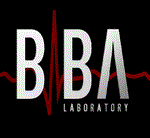Biological Systems Engineering, Department of

Biomedical Imaging and Biosignal Analysis Laboratory
Date of this Version
2012
Document Type
Article
Citation
2012 IEEE International Ultrasonics Symposium Proceedings, pp. 319 - 322.
Abstract
An algorithm which measures the lateral component of blood flow velocity was developed in our previous studies based on the increase in speckle size due to relative motion between moving scatterers and spatial rate of scanner A-line acquisition (scan velocity). In this paper, the apparent dominant angle of the speckle pattern in a straight vessel was investigated and a new method of two-dimensional blood flow velocity estimation is introduced. Different scan velocities were used for data acquisition from blood flow traveling at an angle relative to the ultrasound beam. The apparent angle of the speckle pattern changes with different scan velocities due to mis-registration between the ultrasound beam and scatterers. The apparent angle of the speckle pattern was resolved by line-to-line cross-correlation in the fast time (axial) direction on a region-of-interest (ROI) in each blood flow image and used to spatially align the ROI. The resulting lateral speckle size within the aligned ROI was calculated. The lateral component of the blood flow is shown to be closest to the scan velocity which gives the maximum speckle size and the apparent angle of speckle pattern collected by this scan velocity is the best estimate for the actual angle of blood flow. These two components produce two dimensional blood flow velocity estimations. Blood flow data were collected from a blood flow phantom with a 50 degrees beam-to-flow angle. Nine scan velocities were used to collect data for three different actual velocities. Estimation results for the 2-D velocity magnitude (mean ± std) were 40.2 ± 10.1, 61.8 ± 9.3, and 96.8 ± 12.3 cm/s for actual velocities of 41, 65, and 98 cm/s respectively. Estimation results for the angle (actual 50 degrees for all tests) were 52.7 ± 7.8, 51.6 ± 6.2, and 53.8 ± 5.2 degrees. These results indicate a promising new way to estimate 2-D blood flow velocity.
Included in
Biochemistry, Biophysics, and Structural Biology Commons, Bioinformatics Commons, Health Information Technology Commons, Other Analytical, Diagnostic and Therapeutic Techniques and Equipment Commons, Systems and Integrative Physiology Commons


Comments
Copyright © 2012 IEEE. Used by permission.